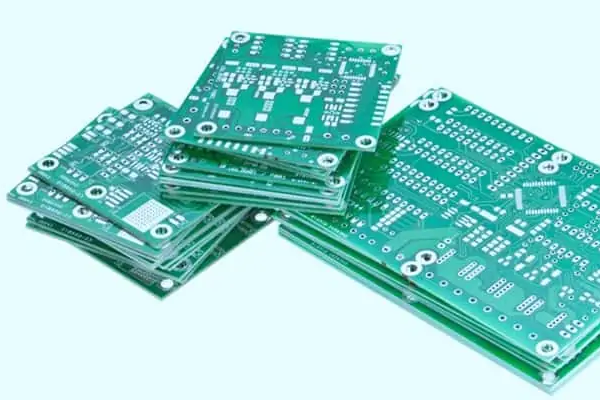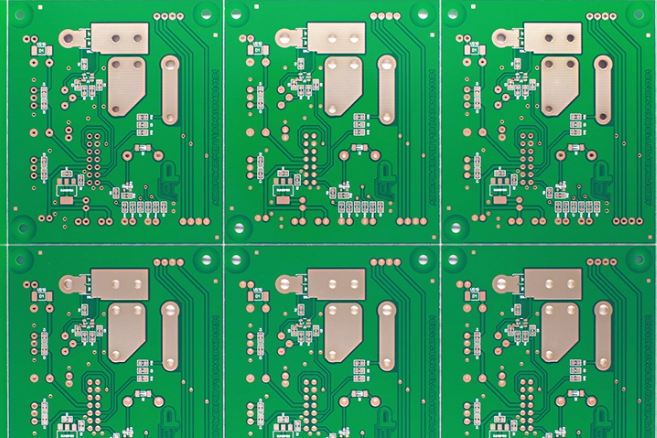In the fast-evolving world of automotive electronics, achieving signal integrity in flex PCB and rigid-flex PCB designs for Electronic Control Units (ECUs) is critical. With the rise of advanced driver-assistance systems (ADAS), electric vehicles (EVs), and connected car technologies, ECUs must handle high-speed data transmission in compact, challenging environments. Signal integrity issues like crosstalk, impedance mismatch, and electromagnetic interference (EMI) can lead to system failures or reduced performance. So, how do you ensure signal integrity in these flexible and hybrid PCB designs? The key lies in careful material selection, controlled impedance design, proper grounding, and optimized layouts tailored for automotive applications.
In this comprehensive guide, we’ll dive deep into the challenges and solutions for maintaining signal integrity in flex and rigid-flex ECU PCBs. Whether you’re an engineer designing automotive electronics or a manufacturer looking to optimize flexible PCB signal performance, this blog will provide actionable insights and best practices to help you succeed.
What is Signal Integrity and Why Does it Matter in Automotive ECUs?
Signal integrity refers to the ability of an electrical signal to maintain its quality as it travels through a circuit. In automotive ECUs, which control everything from engine performance to infotainment systems, poor signal integrity can cause data errors, delays, or complete system malfunctions. With flex PCBs and rigid-flex PCBs often used in tight spaces or areas with constant vibration, maintaining signal integrity becomes even more challenging.
In modern vehicles, ECUs process high-speed signals, often in the range of 1 to 10 Gbps for applications like radar or camera systems in ADAS. A single signal distortion due to impedance mismatch or crosstalk can compromise safety-critical functions. This makes signal integrity a top priority in automotive PCB design, especially when using flexible electronics where bending and dynamic stress add complexity.
Challenges of Signal Integrity in Flex and Rigid-Flex PCBs for Automotive Use
Flex and rigid-flex PCBs offer unique advantages in automotive applications, such as space savings and the ability to conform to irregular shapes. However, these benefits come with specific challenges for signal integrity, especially in the harsh conditions of a vehicle environment. Let’s explore the main hurdles:
1. Dynamic Bending and Mechanical Stress
Flex PCBs in ECUs are often subjected to repeated bending or vibration, especially in areas like door controls or engine compartments. This mechanical stress can cause micro-cracks in traces or degrade dielectric materials, leading to signal loss or intermittent connections. For high-speed signals, even a small change in trace geometry can alter impedance, typically targeted at 50 ohms for single-ended signals or 100 ohms for differential pairs.
2. Impedance Control in Flexible Materials
Unlike rigid PCBs, flex PCBs use materials like polyimide, which have different dielectric constants (typically around 3.2 to 3.5) compared to FR-4 (around 4.5). This difference affects signal propagation speed and impedance. Maintaining consistent impedance across a rigid-flex design, where transitions between rigid and flexible sections occur, is a significant challenge for flexible PCB signal integrity.
3. Electromagnetic Interference (EMI) in Automotive Environments
Automotive systems are notorious for high levels of EMI due to motors, power electronics, and wireless communications. Flex PCBs, with their thin profiles and often unshielded designs, are particularly vulnerable to picking up noise, which can corrupt high-speed signals used in CAN, LIN, or Ethernet protocols.
4. Crosstalk in High-Density Designs
As ECUs become smaller, trace spacing on flex and rigid-flex PCBs decreases, increasing the risk of crosstalk. For instance, in a design with trace spacing below 0.1 mm, coupling between adjacent traces can distort signals, especially at frequencies above 1 GHz, common in modern automotive communication systems.
Best Practices for Achieving Signal Integrity in Flex and Rigid-Flex ECU PCBs
Ensuring signal integrity in automotive flex and rigid-flex PCBs requires a combination of thoughtful design, material selection, and manufacturing precision. Below are proven strategies to address the challenges and optimize performance for flexible electronics signal integrity.
1. Material Selection for Signal Stability
Choosing the right materials is the foundation of signal integrity in flex PCBs. Polyimide is the most common substrate for flexible circuits due to its thermal stability (up to 260°C) and flexibility. However, for high-speed applications, consider low-loss variants with a dissipation factor (Df) below 0.005 to minimize signal attenuation. In rigid-flex designs, ensure the transition between rigid FR-4 and flexible polyimide layers maintains consistent dielectric properties to avoid impedance mismatches.
Additionally, use copper with a low profile or rolled annealed (RA) finish for traces. This reduces the skin effect at high frequencies, where current flows near the surface of conductors, improving signal transmission for frequencies above 500 MHz.
2. Controlled Impedance Design
Impedance control is critical for high-speed signals in automotive ECUs. Use simulation tools to calculate trace width, spacing, and dielectric thickness to achieve target impedance values, such as 50 ohms for USB or 100 ohms for differential pairs like those in Ethernet. For flex PCBs, account for bending areas where trace geometry might change—consider wider traces or additional ground planes in these zones to stabilize impedance.
In rigid-flex designs, pay attention to transitions. A sudden change in layer stack-up can cause reflections, leading to signal loss. Gradual transitions and consistent reference planes can help maintain signal integrity across sections.
3. Grounding and Shielding Techniques
Proper grounding is essential to minimize EMI and crosstalk in flex PCBs. Implement a solid ground plane wherever possible, even in flexible sections, using a cross-hatched pattern if a full plane isn’t feasible due to flexibility needs. This reduces loop inductance and provides a return path for high-speed signals, cutting down noise.
For shielding, consider adding a thin layer of conductive material, such as a silver epoxy or copper foil, over sensitive areas of the flex PCB. This can block external EMI, especially in areas near power electronics, ensuring cleaner signals for automotive protocols.
4. Optimizing Trace Routing and Layout
Trace routing plays a huge role in flexible PCB signal performance. Keep high-speed traces as short and straight as possible to reduce signal delay and potential interference. Avoid sharp 90-degree bends, opting for 45-degree angles or curved traces to minimize reflections. In flex areas, route traces perpendicular to the bend line to reduce stress and prevent cracking.
For differential pairs, maintain consistent spacing and length matching within 5 mils (0.127 mm) to prevent skew, which can disrupt timing in high-speed data transfer. Use via stitching around high-speed traces to connect ground planes, reducing EMI and improving signal return paths.
5. Mitigating Crosstalk in Dense Designs
To combat crosstalk in high-density ECU designs, increase spacing between adjacent traces wherever possible. A general rule of thumb is to maintain a spacing of at least three times the trace width (3W rule) for critical signals. If space constraints prevent this, add ground traces or vias between signal lines to act as barriers, absorbing unwanted coupling.
Additionally, prioritize layer stacking. Place high-speed signals on inner layers sandwiched between ground planes to create a Faraday cage effect, reducing noise pickup in automotive environments.
6. Thermal and Mechanical Considerations
Automotive ECUs often operate in extreme temperatures, ranging from -40°C to 85°C or higher. Thermal expansion can alter the dielectric properties of flex PCB materials, affecting signal integrity. Choose materials with low coefficients of thermal expansion (CTE) to minimize these effects. Reinforce flex areas with stiffeners or adhesives to reduce mechanical stress during vibration, ensuring traces remain intact.
Simulation and Testing for Signal Integrity in Automotive PCBs
Before manufacturing, use simulation tools to model signal behavior in flex and rigid-flex PCB designs. Tools for electromagnetic field analysis can predict impedance, crosstalk, and EMI issues, allowing you to tweak the design early. Focus on time-domain reflectometry (TDR) simulations to identify reflections caused by impedance mismatches, aiming for a reflection coefficient below -20 dB for high-speed lines.
After fabrication, perform thorough testing. Use oscilloscopes to measure eye diagrams for high-speed signals, ensuring the eye opening remains wide (indicating low jitter and noise). Conduct environmental stress tests, simulating automotive conditions like temperature cycling and vibration, to verify signal integrity under real-world scenarios.
Applications of Flex and Rigid-Flex PCBs in Automotive ECUs
Flex and rigid-flex PCBs are widely used in automotive ECUs due to their adaptability and reliability. Common applications include:
- Engine Control Modules: Flex PCBs fit into tight engine compartments, handling high-speed sensor data with minimal signal loss.
- Infotainment Systems: Rigid-flex designs connect displays and control units, maintaining signal integrity for audio and video streams.
- ADAS: Flexible electronics support radar and camera systems, ensuring accurate data transmission for safety features.
By focusing on signal integrity, these designs enhance the performance and safety of modern vehicles, meeting the stringent demands of automotive standards.
Conclusion: Building Reliable ECUs with Signal Integrity in Mind
Achieving signal integrity in flex and rigid-flex ECU PCBs is a complex but essential task for automotive electronics. By addressing challenges like impedance control, EMI, and mechanical stress through careful design and material choices, engineers can create robust systems that perform reliably in harsh vehicle environments. From selecting low-loss materials to optimizing trace routing and conducting rigorous testing, every step plays a vital role in ensuring flexible PCB signal quality.
As automotive technology continues to advance, the demand for high-speed, compact, and durable ECU designs will only grow. Prioritizing signal integrity in flex and rigid-flex PCBs today sets the foundation for safer, smarter vehicles tomorrow. With these strategies, you’re well-equipped to tackle the challenges of signal integrity in automotive applications and deliver cutting-edge solutions.








